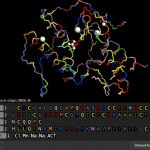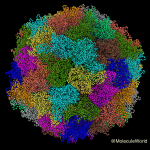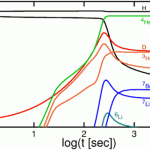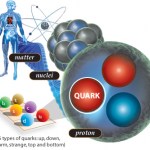molecules
Imagine a simple hike in a grassy part of South America. You hear a rattle and feel a quick stab of pain as fangs sink into your leg. Toxins in the snake venom travel through your blood vessels and penetrate your skin. If the snake is a South American rattlesnake, Crotalus terrific duressis, one of those toxins will be a phospholipase. Phospholipases attack cell and mitochondrial membranes destroying nerve and muscle function. Without quick treatment, a snakebite victim may be die or suffer permanent damage (1, 2).
The phospholipase from…
When my parents were young, summer made cities a scary place for young families. My mother tells me children were often sent away from their homes to relatives in the country, if possible, and swimming pools were definitely off limits. The disease they feared, poliomyelitis, and the havoc it wrecked were the stuff of nightmares. Children could wake up with a headache and end up a few hours later, in an iron lung, struggling to breathe.
Poliovirus colored by molecule in Molecule World.
…
We've been fans of the Molecule of the Month series by David Goodsell, for many years. Not only is Dr. Goodsell a talented artist but he writes very clear descriptions of the ways molecules like proteins, RNA, and DNA work together and function inside a cell.
To learn about proteins and their activities, I like to go directly to the Molecule of the Month page, where I can find a list of articles organized by molecule type and name. Many of these articles can also be downloaded in a PDF format.
A really nice of his articles is that he includes PDB IDs for all the…
“We are not simply in the universe, we are part of it. We are born from it.” -Neil deGrasse Tyson
The story of the Universe is the story of us all; we all share the same cosmic history, coming from a hot, dense state some 13.8 billion years ago known as the Big Bang and emerging after billions of years of cosmic evolution to the Universe we know and love today.
Image credit: ESA and the Planck collaboration.
It's a beautiful story -- and one I've told before -- but it might seem, at least from our perspective, that something is missing from the astrophysicist's version of events. Yes, we…
"The atoms come into my brain, dance a dance, and then go out - there are always new atoms, but always doing the same dance, remembering what the dance was yesterday." -Richard Feynman
Here you are, a human being, a grand Universe of atoms that have organized themselves into simple monomers, assembled together into giant macromolecules, which in turn comprise the organelles that make up your cells. And here you are, a collection of around 75 trillion specialized cells, organized in such a way as to make up you.
Image credit: J. Roche at Ohio University.
But at your core, you are still just…
“We live in an atmosphere of shame. We are ashamed of everything that is real about us; ashamed of ourselves, of our relatives, of our incomes, of our accents, of our opinions, of our experience, just as we are ashamed of our naked skins.” -George Bernard Shaw
All that is real about ourselves is nothing to be ashamed about; quite to the contrary, it's something to be eminently thankful for. This very existence is all we have, and while it's minuscule compared to the entire Universe, it required the entire Universe to bring us to the point where it's possible for us to exist.
What do…
The big physics story of the week is undoubtedly the new limit on the electric dipole moment (EDM) of the electron from Ed Hinds's group at Imperial College in the UK. As this is something I wrote a long article on for Physics World, I'm pretty psyched to see this getting lots of media attention, and not just from physics outlets.
My extremely hectic end-of-term schedule and general laziness almost make me want to just point to my earlier article and have done with it. But really, it's a big story, and one I've been following for a while, so how can I pass up the chance for a ResearchBlogging…
Via Jennifer Ouellette on Twitter, I ran across a Discovery News story touting a recent arxiv preprint claiming to see variation in the fine-structure constant. It's a basically OK story, but garbles a few details, so I thought it would be worth giving it the ResearchBlogging treatment, in the now-traditional Q&A format.
What did they do? The paper looks at some spectral lines in radio emission from a moderately distant galaxy with the poetic name "PKS1413+135." These lines are produced by OH molecules in interstellar gas clouds, and the frequencies they see suggest that there may have…
What's the application? Using lasers to reduce the speed of a sample of atoms, thereby reducing their temperature to a tiny fraction of a degree above absolute zero.
What problem(s) is it the solution to? 1) "How can I make this sample of atoms move slowly enough to measure their properties very accurately?" 2) "How can I make this sample of atoms move slowly enough for their quantum wave-like character to become apparent?"
How does it work? I've written about laser cooling before, but the nickel version of the explanation is this: You can think of a beam of light as being made up of photons…
The grocery store magazine covers all say that home made gifts are big this year. So I thought, some of you might like to channel your inner Martha Stewart and make gifts with a science theme.
I'm here to help to you make a merry mug with one of our favorite molecules. Yep, we're talking caffeine.
1. First, we'll go to PubChem at the NCBI. It's not an exclusive (or even last) resort but there are lots of fancy molecules hanging around, just waiting to be discovered and put onto drinking containers.
2. Now, we'll look for a molecule. I'm going to use caffeine for this example since I…





